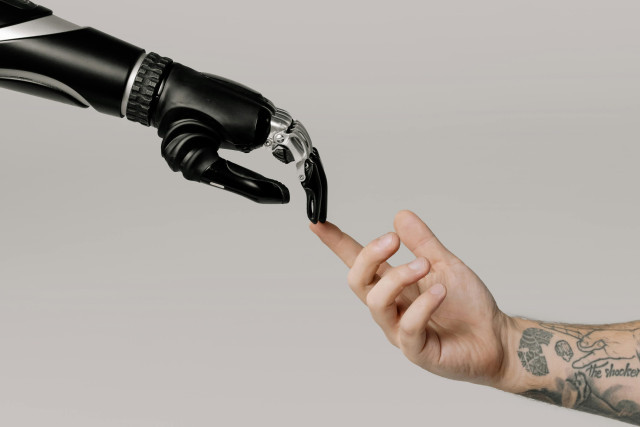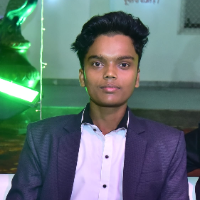The Rise Of Ai-Generated Content: Impact On Creative Industries In 2024
- Posted on 01-12-2024
- Technology
- By Anshu Kumar
- 310 Views
In recent months, Artificial Intelligence (AI) has evolved at an unprecedented rate, and one of the most significant areas of impact has been in the realm of content creation. AI-generated content is no longer confined to technical fields or basic text production. From art and music to writing and video editing, AI has begun to reshape how we approach creativity. This transformation is not only revolutionizing industries but also sparking debates about its implications for the future of human creativity, jobs, and ethics.

What is AI-Generated Content?
AI-generated content refers to any form of media—whether text, images, music, or video—produced by algorithms that have been trained on vast amounts of data. One of the most notable developments in AI technology in recent years has been the rise of generative models, such as OpenAI's GPT (Generative Pre-trained Transformer) series, and image-generation tools like DALL·E and MidJourney. These models can create text, visual art, music, and even video content based on simple prompts or instructions.
For example, AI can now write articles, blogs, social media posts, and even entire books, mimicking the style of specific authors or genres. Image-generation AI can create stunning visual artwork from a simple description, and AI-driven music software can compose original pieces in various genres. The possibilities are almost endless, leading to new opportunities as well as new challenges.
### The Impact on Creative Industries
The influence of AI in creative fields is already being felt across various industries:
1. **Media and Journalism**: AI tools like GPT-4 and its competitors have enabled faster content generation, assisting journalists in drafting articles, summarizing news events, and even generating headlines. However, concerns about quality and accuracy persist, especially as AI tools may lack the human touch or deeper contextual understanding that professional writers provide. Still, AI is reshaping how newsrooms operate, enabling more efficient workflows but also prompting concerns about job displacement.
2. **Art and Design**: AI-generated art is pushing the boundaries of traditional creativity. Artists and designers can now collaborate with AI to produce visually striking works that would have been unthinkable just a few years ago. However, this has led to a growing debate about the value of human-made art. Critics argue that AI-produced art lacks the emotional depth or cultural significance that a human artist brings, while proponents claim it democratizes the creative process and allows anyone to create.
3. **Music Production**: AI-generated music platforms, such as Amper Music and Jukedeck, are providing musicians and producers with innovative tools to generate soundtracks and even entire songs. While some artists are embracing these tools to expand their creative possibilities, others worry about the potential for AI to flood the market with generic and formulaic music.
4. **Advertising and Marketing**: AI is also making its mark in advertising, where tools like Copy.ai and Jasper are helping marketers generate copy for ads, websites, and social media campaigns. These tools save time and can optimize content for specific audiences. However, some fear that over-reliance on AI-generated content may result in a loss of originality and a rise in homogenous messaging.
### Ethical Considerations and Challenges
While AI-generated content offers exciting possibilities, it also raises significant ethical questions. One of the primary concerns is **authorship**—who owns the content created by an AI? Is it the developer who trained the AI, the user who provided the input, or the AI itself? Additionally, AI systems are often trained on large datasets, which may include copyrighted material. This has led to questions about whether AI-generated works infringe on the intellectual property rights of original creators.
Another concern is **the potential for bias** in AI-generated content. AI models can inadvertently perpetuate harmful stereotypes or produce biased narratives based on the data they were trained on. Without human oversight, AI-generated content could reinforce negative societal trends or exclude certain voices from creative fields.
Finally, the **impact on jobs** in creative industries cannot be ignored. While AI can enhance productivity and open new avenues for creativity, it may also displace workers in areas like writing, graphic design, and even music production. As AI tools become more sophisticated, the need for traditional roles may diminish, leading to questions about job security and the future of creative professions.
### Looking Ahead: The Future of AI in Creativity
The role of AI in creative industries is only just beginning to unfold. As technology continues to improve, AI-generated content is likely to become an even more integral part of how we produce and consume media. The key challenge moving forward will be finding a balance between embracing innovation and preserving the value of human creativity.
Ultimately, AI should be seen as a tool that can complement, rather than replace, human artists, writers, and creators. By working together with AI, humans can push the boundaries of what is possible while retaining the emotional depth and authenticity that make creative work meaningful. As AI tools continue to evolve, they will undoubtedly shape the future of the creative economy—but the human touch will always remain an essential ingredient in true artistic expression.
### Conclusion
AI-generated content is a game-changer in the world of creativity, offering new tools, opportunities, and challenges. As the technology continues to develop, it will likely become an essential part of creative industries, reshaping how content is produced, consumed, and valued. However, the rapid rise of AI also raises important ethical questions that need to be addressed, ensuring that the creative process remains inclusive, diverse, and true to the values that human artists and creators hold dear.



-uIAvsumZAy.jpeg)
-eHMDi5sii6.jpeg)